“Should Objects Be Beautiful?”
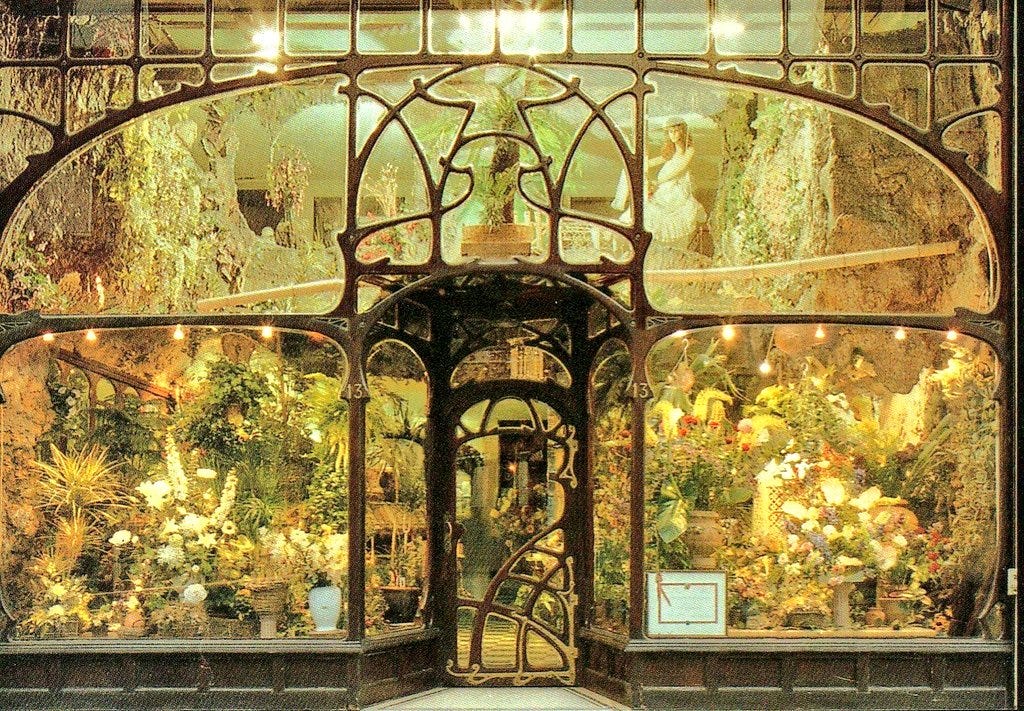
Originally published on the author’s Substack
An intro to Art Nouveau…
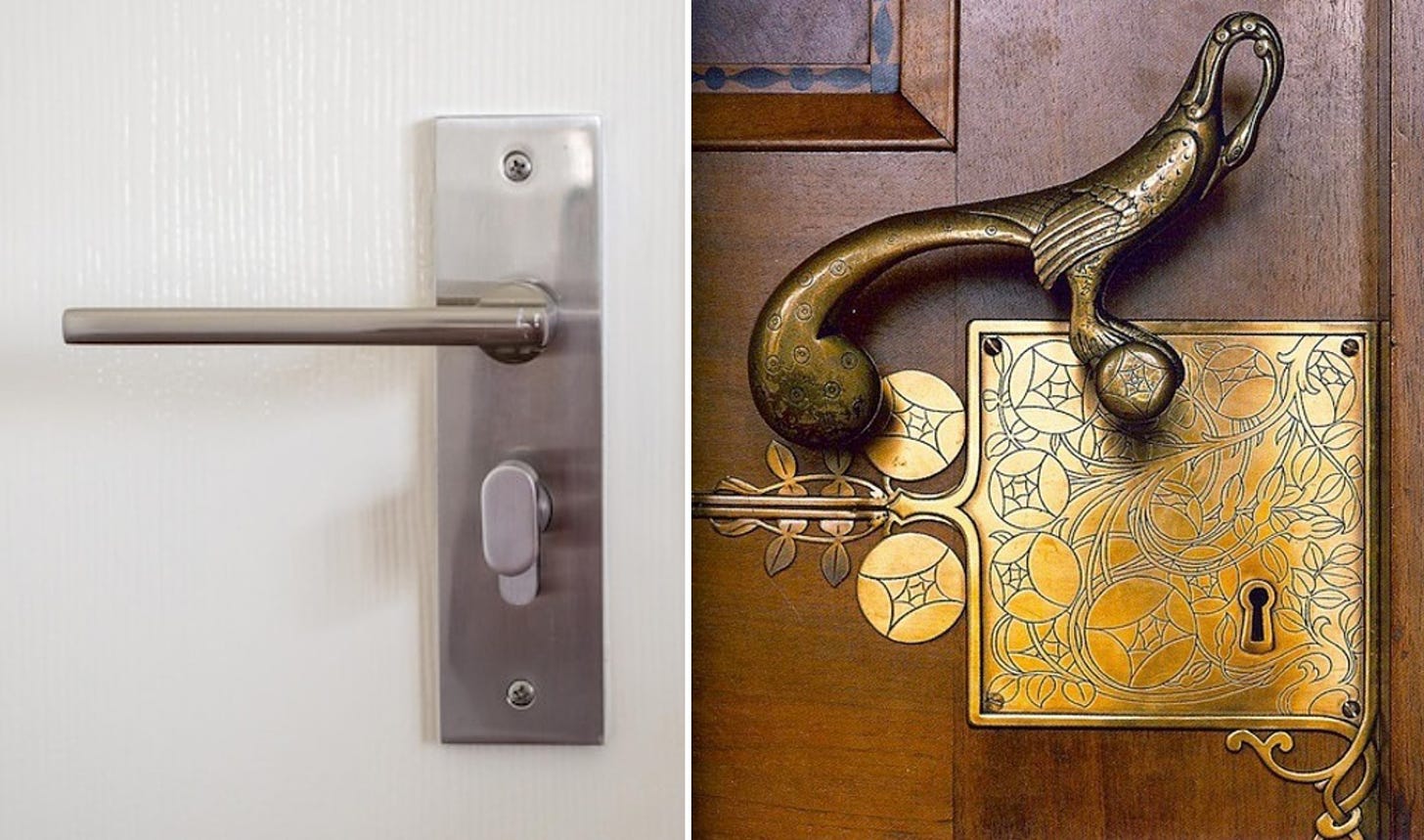
Should objects be beautiful, or should they be useful?
Faced with the crushing pressure of the Industrial Revolution, one artistic movement proved that culture need not choose between the two.
Let’s dive into one of history’s most under-appreciated (yet most powerful) artistic movements, and how it can still shape culture for the better today: Art Nouveau…
Turning Back the Clock
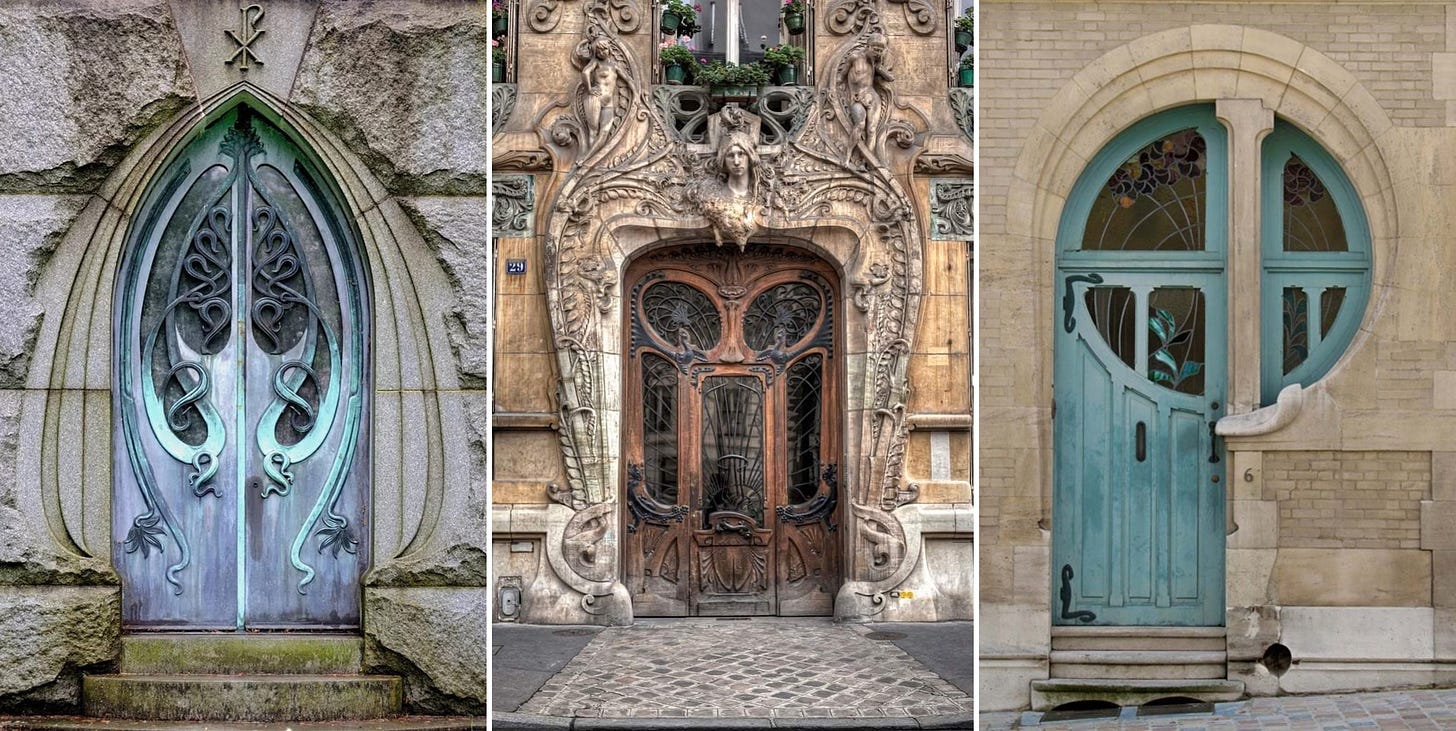
Europe’s 19th century was dominated by bold political leaders and epoch-defining events. Artists of the time used styles inspired by the Greek and Roman empires, such as Classicism, to express the grand ambitions that drove European politics.
But as the Industrial Revolution gained power, artists slowly lost interest in these noble styles. Industrialism began to sweep away the traditional craftsmanship that had once filled homes with beauty — and even worse, a new world of machines, clocks, and factories was severing the people’s connection to the everyday rhythms of nature.
Filled with nostalgia for the simpler times of the past, artists turned to a style to connect them with nature again: Art Nouveau.
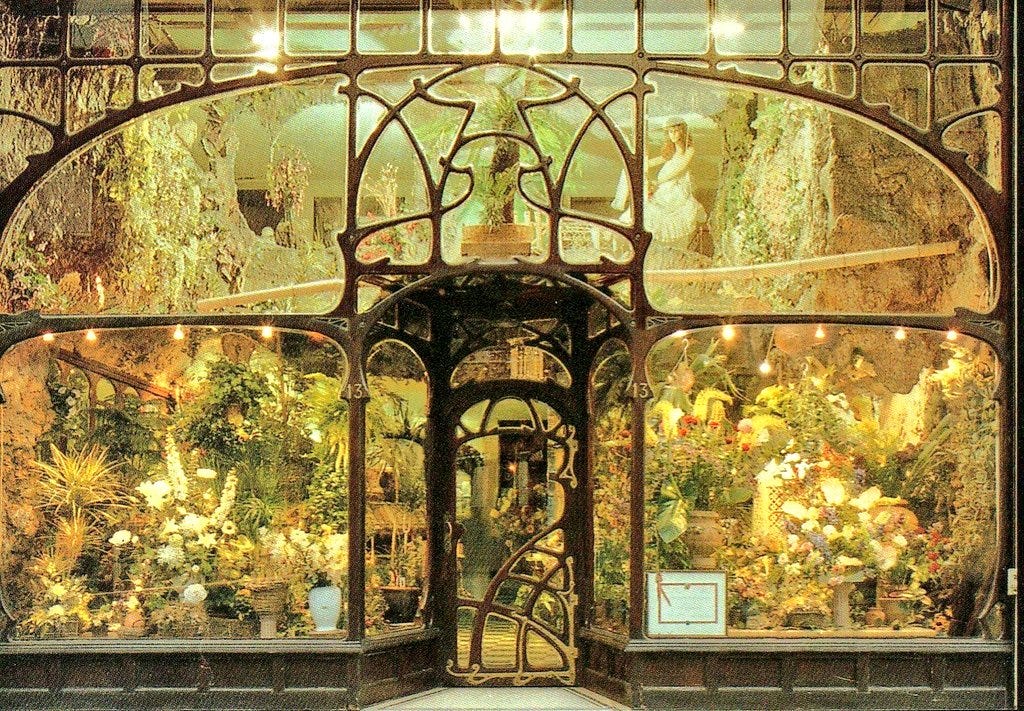
This “New Art” dispensed with the clean lines of Classicism, instead favoring curved, organic lines, asymmetrical shapes, flowers, animals, and other natural elements. It drew on Europe’s medieval history, taking inspiration from Celtic and Norse mythology, as well as the intricate knot art that characterizes these cultures.
Although Art Nouveau was a reaction against industrialization, it didn’t completely reject it. While other reactionary art movements of the time shunned mass-production techniques entirely, Art Nouveau only rejected the impersonal, ugly goods that industrialism tended towards.
But it took the new production techniques and leveraged them as an opportunity to create beauty on scale. By using industrial materials like steel and glass, Art Nouveau created a vast collection of intricate, almost fairytale-worthy goods for the modern age.
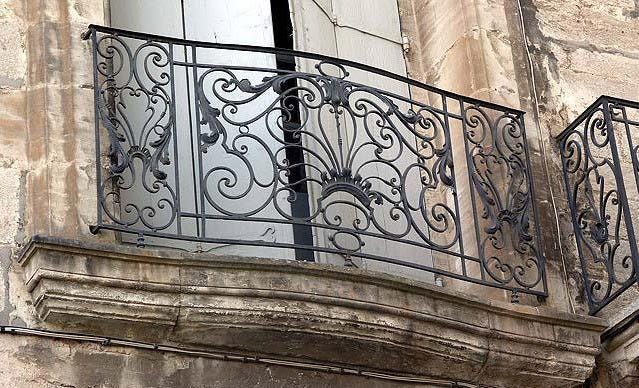
Art Nouveau eventually rose to the top of culture and dominated the stylistic scene from about 1890 until 1910. During that time, Art Nouveau didn’t limit itself to visual arts — rather, it extended into crafts, architecture, advertising, and even pop culture. Instead of being an academic movement confined to canvases, it was a world-embracing conviction that the minutiae of everyday life should be as beautiful as possible.
A Forest of Inspiration
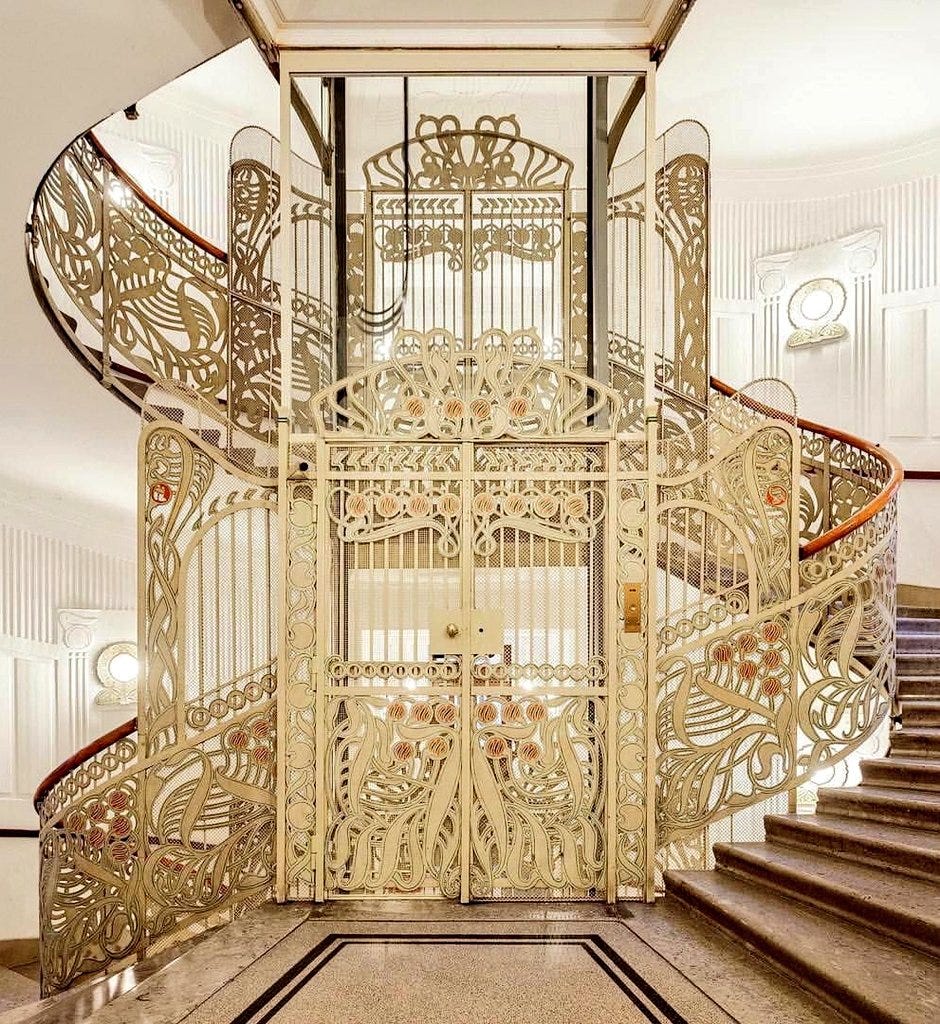
The nature of Art Nouveau is, above all, to blend — to blend with local subcultures, other art movements, and new innovations.
As the Art Nouveau movement spread across Europe, it gained a litany of names. Some of these are now used interchangeably with related styles such as Viennese Youth, Glasgow, Modern, and Whiplash (in reference to its signature offset curve, often found in staircases).
Some designers fused the dreamy nostalgia of Art Nouveau with fantastical inspirations from other cultures, yielding sub-movements like Rococo Revival, Gothic Revival, and even Egyptian Revival. Many architects even took inspiration from elements of Classicism to construct simultaneously innovative yet traditional edifices.
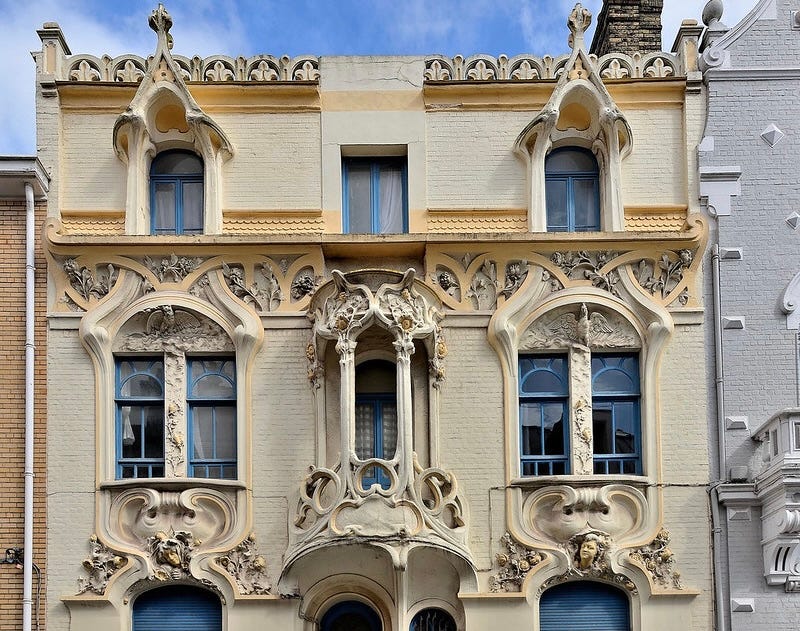
Art Nouveau’s wide-ranging inspirations mean that its works vary widely in appearance. While some items and architecture stand out as “textbook” Art Nouveau, others are harder to spot. Here are three examples of the touchstone works that define the movement:
Hotel Tassel
Victor Horta’s groundbreaking design for this townhouse in Brussels (completed 1893) is often considered the first Art Nouveau building.
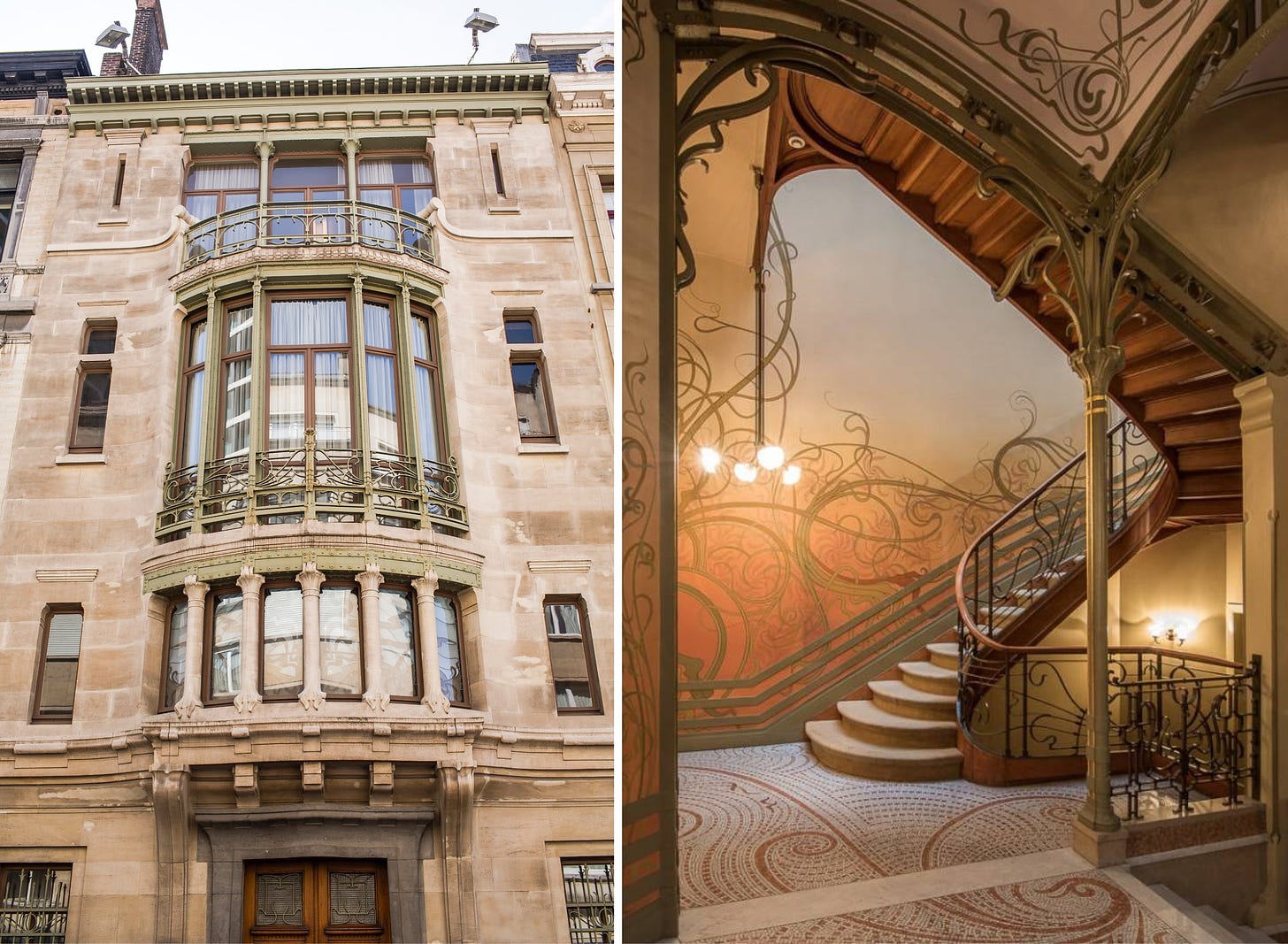
Despite being composed of mainly iron and glass, the building has a sense of unbroken fluidity. The external facade’s wavelike exterior is echoed in the characteristic whiplash lines of the interior, especially the curve of the staircase and decorations of the floor and walls.
True to the Art Nouveau mindset, Horta designed every feature of the interior decoration himself, allowing each piece to showcase its own unique beauty, while still remaining cohesive with the true work of art — the house itself.
Casa Batlló
A masterpiece of the Catalan architect Antoni Gaudí’s extreme interpretation of Art Nouveau, Casa Batlló forgoes lines entirely.

The house’s bulbous shapes recall the undulating forms of tree roots or the sculptural shapes of bones, while inside, irregular layered curves seem inspired by sand dunes.
The unsettling aura of organic decay earns the house the nickname Casa dels ossos, “House of Bones.”
Tiffany Lamps
Elaborate stained-glass windows defined Art Nouveau architecture. But what happened with all the scrap glass left behind after a project?
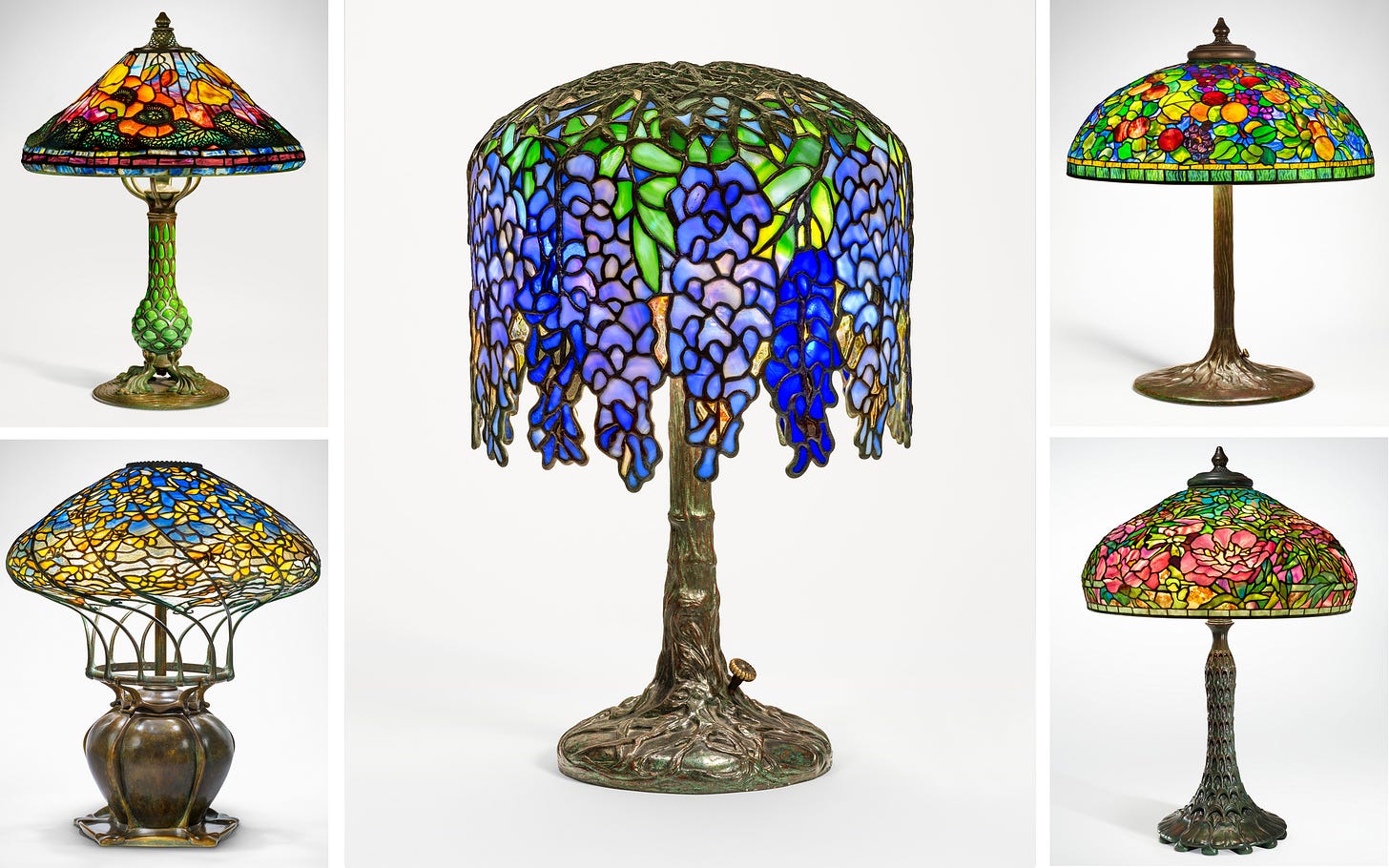
The American designer Louis Comfort Tiffany was the first to find a use for the offcuts produced by his glass designs — handcrafted glass lamps which soon became an icon of the era.
An Eternal Lesson from New Art
At a time when technology seemed to be at war with tradition, Art Nouveau found a way to marry the two. At its core, it was the fusion of new production techniques and time-tested beauty.
Art Nouveau’s rapid ascent was cut short by two world wars, yet it has remained an inspiration for designers through the ages.
Most of all, it reminds us that a creative use of technology can bring us closer to beauty, rather than further from it — it’s not just a pertinent reminder for our times, but the goal we should aspire to.
Subscribe to DailyClout so you never miss an update!
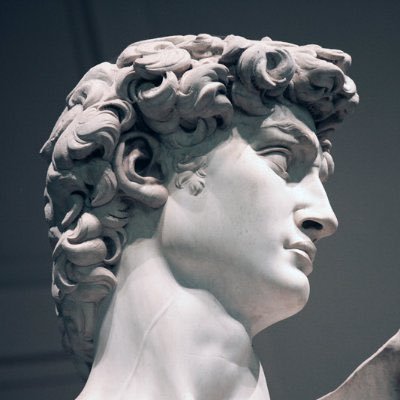
One of our country’s most important freedoms is that of free speech.
Agree with this essay? Disagree? Join the debate by writing to DailyClout HERE.



